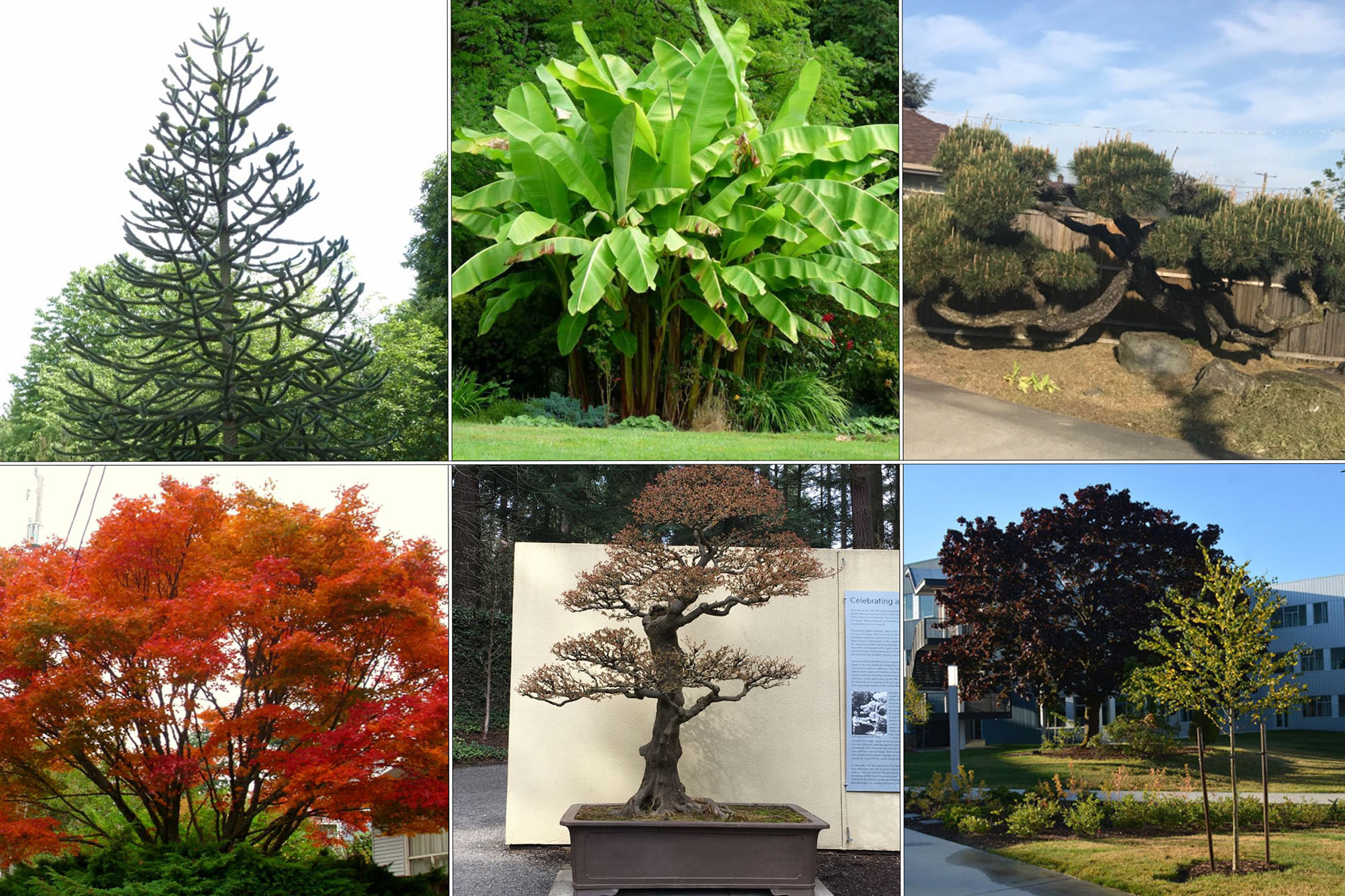“My goal is to create a forest of stories,” says Katherine Wimble, the Seattle artist behind “Forest for the Trees.” The crowd-sourced project invites the public to contribute to an online “storymap” by pinpointing the location of a specific tree, dropping in a photo and adding an observation, memory, poem or story. (While the effort is based in King County, pins can be placed anywhere on the global map.) The tree might be historic, or one seen every day while stuck in traffic. It might have been planted in a backyard by a beloved grandparent, or maybe it simply provides shade at a bus stop. A tree’s “significance” is up to user interpretation.
As described by forester Peter Wohlleben in his bestselling nature book, The Hidden Life of Trees, trees signal each other when danger is present, provide nutrients to ailing trees nearby, leave room for their neighbors’ branches and alter the scents they emit when humans are around. In other words, trees are the original social network. So it seems appropriate that a modern-day social network could get people to notice and appreciate trees — before they’re gone.
Amid the current civic boom, developers are benefiting from Seattle’s loose tree regulations. Builders are permitted to cut swaths of trees, even those deemed “exceptional” (in size or species), if retaining them “would prevent a project from meeting the development potential of the zone.”
“We are really feeling the impact of development in South King County,” says Barbara McMichael, administrator of SoCo Culture (South King County Cultural Coalition), an umbrella organization of arts, heritage and botanical agencies. (“Botany is culture, too!” notes Wimble.) McMichael says several major transportation projects coming down the pike will be detrimental to longstanding trees, including the Federal Way Link light rail expansion and the extension of Highway 509.
Also on deck is the Port of Seattle’s in-progress removal of thousands of trees that have been tagged as too tall for Sea-Tac Airport landings. And at the old Weyerhaeuser headquarters in Federal Way, new owners have slated 110 acres (including forests and nature trails) for massive industrial warehouses.
All these disappearing trees can make a concerned citizen feel like The Lorax. “It can’t just be ‘cranky Barb’ showing up at public meetings saying, ‘What about the trees?’” McMichael jokes. That’s why, in 2015, she began “fomenting a pro-tree movement in South King County” with a project called Engaging Trees. The initial intent was to produce a census of notable local trees and a related speaker series (partly paid for by the Port of Seattle’s tree mitigation funds).
“We started the Engaging Trees initiative to draw attention to the fact that trees are culturally significant,” McMichael says. The intention is to heighten awareness of the crucial connection between humans and trees before the former wake up and wonder where the latter went.
When Wimble (who has a background in forestry, landscape design and art) first heard about Engaging Trees, she knew she wanted to be involved. As marketing and communications manager for the Pacific Bonsai Museum, she understands both the art and importance of trees.
It was her idea to make the initiative interactive. A fan and creator of socially driven installation art (which requires audience participation to blossom), Wimble believes “collaboration bears more fruit and beauty than just one person.”

As participants scroll over and zoom into the satellite map, individual photos of trees, along with accompanying text, pop up on the right side of the screen. Suddenly, instead of a nondescript mass of green that our brains register only vaguely as trees, we see individual specimens, each with its own story.
“My parents planted this Akebono Yoshino tree in honor of my grandmother…” begins one entry from just south of Angle Lake. Another, from Des Moines Memorial Drive, reads, “These are great old beautiful trees that we love. See how these old elms grew up and impacted the power lines?” In Normandy Park, someone writes, “This beauty, a 200+ ft grand fir, can be found in Walker Preserve Park. Is this the tallest tree in the city?” And on Columbian Way, a participant says, “I don’t know the history of this tree but I know enough about pruning to know this tree must’ve had some special care early in its life.”
As more stories begin to populate the map, Wimble feels like something big is blooming. “My hope is that people will read these stories, see trees differently and think about their own connections to trees,” she says. “Their lives are intertwined with ours.”
Crosscut arts coverage is made possible with support from Shari D. Behnke.

